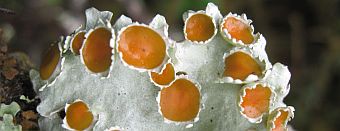Lichens and Lichenicolous Fungi of Bolivia








The Biological Diversity of Tropical South America:
Bolivian Lichens – a Case Study
|
This website is dedicated to and disseminates the results of a multidirectional research project investigating lichens and lichenicolous fungi of Bolivia. The project is financed by the National Centre for Research and Development within the LIDER programme. Its main aim is to develop knowledge on the biodiversity of South America, to investigate the species diversity of lichens in Bolivia and to promote further research in the region. Bolivia is one of the countries with the greatest biodiversity worldwide. It covers an area of over 1 million km2, extends over regions of significant physiographic differentiation and offers a wide range of ecosystems. Despite Bolivia’s interesting location in the tropical zone and the biological uniqueness of its plant life, lichens of Bolivia remain almost completely unexplored. Only 150 species were known from the country in 1998. Some further 1400 species were recorded and described in the following years. The world diversity of tropical lichens is estimated at 13000 species, with as many as 7000 species thought to occur in the neotropics. If these estimates are correct, the biota of lichens and lichenicolous fungi in Bolivia should consist of 4000 lichenized and 800 lichenicolous species. |
The project is the first study of this scale to investigate the lichen biota of Bolivia and hopes to expand knowledge on lichens and lichen-related fungi in South America. It will include examinations of the systematics, phylogeny and secondary metabolite composition in selected, poorly examined groups of taxa. Studies will also contribute to the recognition of the role of lichens in individual ecosystem types, their habitat preferences and geographical distribution. Research into lichens, highly sensitive to environmental changes, will lead to improvements in the protection of natural biodiversity in Bolivia. The project will aid and support actions aimed at preserving natural ecological processes in a biolo-gically unique area of great natural value.
|
Lichens
Lichens, or lichenized fungi, are a symbiotic relationship between a fungus and a green alga and/or a cynano-bacterium. The morphology of the new organism very much differs from that of each component. Lichens play an impor-tant role in ecosystems of all climatic zones, also extreme ones, the Arctic, high mountain ecosystems, deserts and rain-forests. They are sensitive to anthropo-genic transformations of the environment and the climate, and are excellent bioindicators. However, the systematics, evolution, physiology and biogeography of lichens are still underexamined. The biota of parasitic lichenicolous fungi associated with lichens is explored even less.

Tropical areas are the largest reservoir of biological diversity, including lichen diversity, in the land part of the world. Investigations conducted in Bolivia will significantly contribute to the knowledge of lichens and should encourage further studies in this geographic region.
Laboratory of Lichenology, W. Szafer Institute of Botany PAS, Lubicz 46, PL-31-512 Krakow



